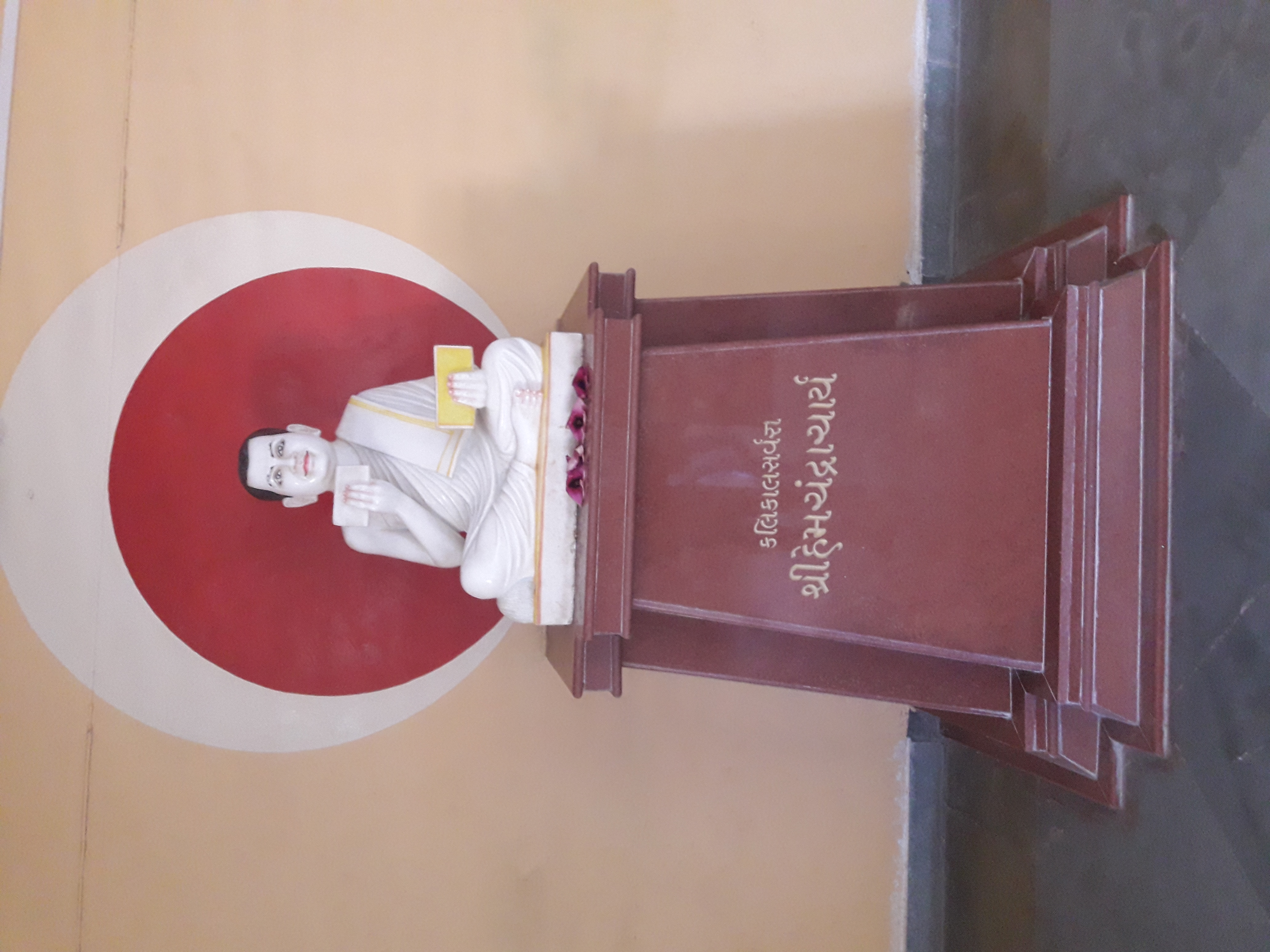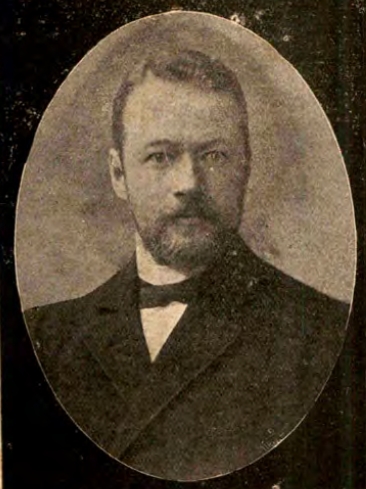|
Parishishtaparvan
The Parishishtaparvan () also known as the Sthaviravalicharitra () is a 12th-century Sanskrit mahakavya by Hemachandra which details the histories of the earliest Jain teachers. The poem comprises 3,460 verse couplets divided into 13 cantos of unequal length and is also notable for providing information on the political history of ancient India. The ''Trishashtishalakapurushacharitra'' (; ''The Lives of the Sixty-three Illustrious People''), an epic Sanskrit poem on the key figures in Jainism, was composed by Hemachandra at the request of the Chaulukya king, Kumarapala. The Sthaviravalicharitra (''The Lives of the Jain Elders'') is considered a self-contained sequel to this work and is consequently referred to as the Parishishtaparvan or ''The Appendix''. The period largely covered in the poem corresponds to and follows the growth of the kingdom of Magadha and the establishment of the Maurya Empire. According to Hemachandra, the sequence of rulers in the times of the Jains discu ... [...More Info...] [...Related Items...] OR: [Wikipedia] [Google] [Baidu] |
Chandragupta Maurya
Chandragupta Maurya (350-295 BCE) was a ruler in Ancient India who expanded a geographically-extensive kingdom based in Magadha and founded the Maurya dynasty. He reigned from 320 BCE to 298 BCE. The Maurya kingdom expanded to become an empire that reached its peak under the reign of his grandson, Asoka, from 268 BCE to 231 BCE. The nature of the political formation that existed in Chandragupta's time is not certain. The Mauryan empire was a loose-knit empire. Quote: "The geography of the Mauryan Empire resembled a spider with a small dense body and long spindly legs. The highest echelons of imperial society lived in the inner circle composed of the ruler, his immediate family, other relatives, and close allies, who formed a dynastic core. Outside the core, empire travelled stringy routes dotted with armed cities. Outside the palace, in the capital cities, the highest ranks in the imperial elite were held by military commanders whose active loyalty and success in war determi ... [...More Info...] [...Related Items...] OR: [Wikipedia] [Google] [Baidu] |
Parvataka
Porus or Poros ( grc, Πῶρος ; 326–321 BC) was an ancient Indian king whose territory spanned the region between the Jhelum River (Hydaspes) and Chenab River (Acesines), in the Punjab region of the Indian subcontinent. He is only mentioned in Greek sources. Credited to have been a legendary warrior with exceptional skills, Porus unsuccessfully fought against Alexander the Great in the Battle of the Hydaspes (326 BC).Fuller, pg 198 In the aftermath, an impressed Alexander not only reinstated him as his satrap but also granted him dominion over lands to the south-east extending until the Hyphasis ( Beas).p. xl, Historical Dictionary of Ancient Greek Warfare, J, Woronoff & I. SpenceArrian Anabasis of Alexander, V.29.2 Porus reportedly died sometime between 321 and 315 BC. Sources The only contemporary information available on Porus and his kingdom is from Greek sources, whereas Indian sources do not mention him. These Greek sources differ considerably among themselve ... [...More Info...] [...Related Items...] OR: [Wikipedia] [Google] [Baidu] |
Maurya Empire
The Maurya Empire, or the Mauryan Empire, was a geographically extensive Iron Age historical power in the Indian subcontinent based in Magadha, having been founded by Chandragupta Maurya in 322 BCE, and existing in loose-knit fashion until 185 BCE. Quote: "Magadha power came to extend over the main cities and communication routes of the Ganges basin. Then, under Chandragupta Maurya (c.321–297 bce), and subsequently Ashoka his grandson, Pataliputra became the centre of the loose-knit Mauryan 'Empire' which during Ashoka's reign (c.268–232 bce) briefly had a presence throughout the main urban centres and arteries of the subcontinent, except for the extreme south." The Maurya Empire was centralized by the conquest of the Indo-Gangetic Plain, and its capital city was located at Pataliputra (modern Patna). Outside this imperial center, the empire's geographical extent was dependent on the loyalty of military commanders who controlled the armed cities sprinkling it. During As ... [...More Info...] [...Related Items...] OR: [Wikipedia] [Google] [Baidu] |
Hemachandra
Hemachandra was a 12th century () Indian Jain saint, scholar, poet, mathematician, philosopher, yogi, grammarian, law theorist, historian, lexicographer, rhetorician, logician, and prosodist. Noted as a prodigy by his contemporaries, he gained the title ''kalikālasarvajña'', "the knower of all knowledge in his times" and ''father of Gujarati language''. Born as Changadeva, he was ordained in the Śvētāmbara school of Jainism in 1110 and took the name Somachandra. In 1125 he became an adviser to King Kumarapala and wrote ''Arhanniti'', a work on politics from a Jain perspective. He also produced ''Trishashti-shalaka-purusha-charita'' (“Deeds of the 63 Illustrious Men”), a Sanskrit epic poem on the history of important figures of Jainism. Later in his life, he changed his name to Hemachandra. Early life Hemachandra was born in Dhandhuka, in present-day Gujarat, on Kartika Sud Purnima (the full moon day of Kartika month). His date of birth differs according to source ... [...More Info...] [...Related Items...] OR: [Wikipedia] [Google] [Baidu] |
Chanakya
Chanakya ( Sanskrit: चाणक्य; IAST: ', ; 375–283 BCE) was an ancient Indian polymath who was active as a teacher, author, strategist, philosopher, economist, jurist, and royal advisor. He is traditionally identified as Kauṭilya or Vishnugupta, who authored the ancient Indian political treatise, the ''Arthashastra'', a text dated to roughly between the fourth century BCE and the third century CE. As such, he is considered the pioneer of the field of political science and economics in India, and his work is thought of as an important precursor to classical economics.Waldauer, C., Zahka, W.J. and Pal, S. 1996Kauṭilya's Arthashastra: A neglected precursor to classical economics ''Indian Economic Review'', Vol. XXXI, No. 1, pp. 101–108. His works were lost near the end of the Gupta Empire in the sixth century CE and not rediscovered until the early 20th century. Around 321 BCE, Chanakya assisted the first Mauryan emperor Chandragupta in his rise to power an ... [...More Info...] [...Related Items...] OR: [Wikipedia] [Google] [Baidu] |
Nandas
The Nanda dynasty ruled in the northern part of the Indian subcontinent during the fourth century BCE, and possibly during the fifth century BCE. The Nandas overthrew the Shaishunaga dynasty in the Magadha region of eastern India, and expanded their empire to include a larger part of northern India. Ancient sources differ considerably regarding the names of the Nanda kings and the duration of their rule, but based on the Buddhist tradition recorded in the '' Mahavamsa'', they appear to have ruled during ''circa'' 345–322 BCE, although some theories date the start of their rule to fifth century BCE. The Nandas built on the successes of their Haryanka and Shaishunaga predecessors, and instituted a more centralised administration. Ancient sources credit them with amassing great wealth, which was probably a result of introduction of new currency and taxation system. Ancient texts also suggest that the Nandas were unpopular among their subjects because of their low status birth, ... [...More Info...] [...Related Items...] OR: [Wikipedia] [Google] [Baidu] |
Sanskrit
Sanskrit (; attributively , ; nominally , , ) is a classical language belonging to the Indo-Aryan languages, Indo-Aryan branch of the Indo-European languages. It arose in South Asia after its predecessor languages had Trans-cultural diffusion, diffused there from the northwest in the late Bronze Age#South Asia, Bronze Age. Sanskrit is the sacred language of Hinduism, the language of classical Hindu philosophy, and of historical texts of Buddhism and Jainism. It was a lingua franca, link language in ancient and medieval South Asia, and upon transmission of Hindu and Buddhist culture to Southeast Asia, East Asia and Central Asia in the early medieval era, it became a language of religion and high culture, and of the political elites in some of these regions. As a result, Sanskrit had a lasting impact on the languages of South Asia, Southeast Asia and East Asia, especially in their formal and learned vocabularies. Sanskrit generally connotes several Indo-Aryan languages#Old Indo- ... [...More Info...] [...Related Items...] OR: [Wikipedia] [Google] [Baidu] |
Pearson PLC
Pearson plc is a British multinational publishing and education company headquartered in London, England. It was founded as a construction business in the 1840s but switched to publishing in the 1920s. Spender, J. A., ''Weetman Pearson: First Viscount Cowdray'' (London: Cassell and Company Limited, 1930). It is the largest education company and was once the largest book publisher in the world. In 2013 Pearson merged its Penguin Books with German conglomerate Bertelsmann. In 2015, the company announced a change to focus solely on education. Pearson plc owns one of the GCSE examining boards for the UK, Edexcel. Pearson has a primary listing on the London Stock Exchange and is a constituent of the FTSE 100 Index. It has a secondary listing on the New York Stock Exchange in the form of American depositary receipts. History Construction business: 1844 to the 1920s The company was founded by Samuel Pearson in 1844 as a building and engineering concern operating in Yo ... [...More Info...] [...Related Items...] OR: [Wikipedia] [Google] [Baidu] |
Motilal Banarsidass
Motilal Banarsidass Publishing House (MLBD) is an Indian academic publishing house, founded in Delhi, India in 1903. It publishes and distributes serials, monographs, and scholarly publications on Asian religions, Buddhology, Indology, Eastern philosophy, history, culture, arts, architecture, archaeology, language, literature, linguistics, musicology, mysticism, yoga, tantra, occult, medicine, astronomy, and astrology. Amongst its publications are the 100 volumes of the Mahapuranas; the 50 volumes of the '' Sacred Books of the East'', edited by Max Müller; ''Bibliotheca Buddhica'' (30 volumes in 32 pts); Ramcharitmanas with Hindi and English translations; the Manusmriti in 10 volumes and the Sanskrit lexicon; and the 7 volumes of ''Encyclopedia of Indian Philosophies''. It also brings out books based on research and study conducted at organizations such as the Indian Council of Historical Research (ICHR), Indira Gandhi National Centre for the Arts (IGNCA), a ... [...More Info...] [...Related Items...] OR: [Wikipedia] [Google] [Baidu] |
Hermann Jacobi
Hermann Georg Jacobi (11 February 1850 – 19 October 1937) was an eminent German Indologist. Education Jacobi was born in Köln (Cologne) on 11 February 1850. He was educated in the gymnasium of Cologne and then went to the University of Berlin, where initially he studied mathematics, but later, probably under the influence of Albrecht Weber, switched to Sanskrit and comparative linguistics, which he studied under Weber and Johann Gildemeister. He obtained his doctorate from the University of Bonn. The subject of his thesis, written in 1872, was the origin of the term "hora" in Indian astrology. Jacobi was able to visit London for a year, 1872–1873, where he examined the Indian manuscripts available there. The next year, with Georg Buehler, he visited Rajasthan, India, where manuscripts were being collected. At Jaisalmer Library, he came across Jain Manuscripts, which were of abiding interest to him for the rest of his life. He later edited and translated many of them, ... [...More Info...] [...Related Items...] OR: [Wikipedia] [Google] [Baidu] |
Dhana Nanda
Dhana Nanda (died c. 321 BCE), according to the Buddhist text '' Mahabodhivamsa'', was the last ruler of the Nanda dynasty of ancient India. He was the youngest son of Mahapadma Nanda. Chandragupta Maurya raised an army that eventually conquered the Nanda capital Pataliputra and defeated him. This defeat marked the fall of the Nanda Empire and the birth of the Maurya Empire. The Jain tradition presents a similar legend about the last Nanda emperor, although it simply calls the emperor "Nanda", and states that the emperor was allowed to leave his capital alive after being defeated. The Puranas give a different account, describing the last Nanda emperor as one of eight sons of the dynasty's founder, whom they call Mahapadma. The Greco-Roman accounts name Alexander's contemporary ruler in India as Agrammes or Xandrames, whom modern historians identify as the last Nanda emperor. According to these accounts, Alexander's soldiers mutinied when faced with the prospect of a war with t ... [...More Info...] [...Related Items...] OR: [Wikipedia] [Google] [Baidu] |









